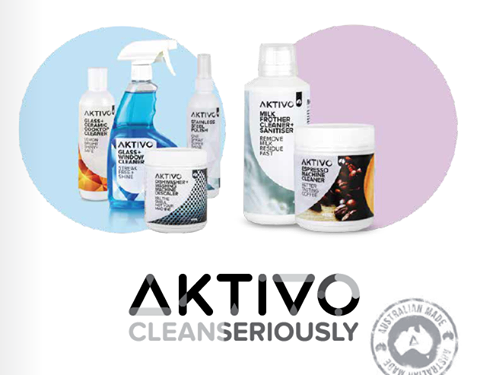When you in invest new appliances for your kitchen, the final look is so amazing and the pieces themselves can do so much, but it’s easy to fall into the trap of thinking they are totally self-servicing and there’s no need for any TLC! Unfortunately, that’s not the case; even self-cleaning kitchen gear needs maintenance, cleaning and love, and the efforts will help you protect the value of your investment.
Not only is this a cosmetic concern, it can be a functional one too! If some basic maintenance and cleaning guidelines aren’t following, your cooking efficiency can be lowered. Don’t make the mistake of losing out on the whole reason you made an investment in quality in the first place.
Our first tip is to keep your user’s manuals and follow the directions in them for all maintenance instructions. Also, beyond the manufacturers’ user guidelines, you can also follow these expert recommendations for maintaining your high-end appliances!
Think “Polishing” or “Shining” when it comes to stainless steel.
Your toughest appliances are often your most sensitive too, ironically. Steel can withstand some really heavy duty rigours, but it’s also a surface that absorbs oils very easily (which is why your toddler’s fingerprints are so very evident on the surface.) Because of this, gently wiping the surface with a lint-free cloth or a microfiber sponge with a tiny bit of dishwashing soap is often enough. This method will remove smudges, fingerprints and even grease.
NEVER use anything abrasive, like steel wool or even a soft-bristled cleaning brush. You can easily scratch the surface this way. If the method I described doesn’t cut out all of the mess, a tiny bit of Soft Scrub may be diluted with water to a 50/50 solution and applied for a few minutes, then rubbed off with a damp sponge.
These same rules apply to newer versions of “stainless steel” that come in muted colours. Even though they aren’t shiny, they are made of the same material and will have the same needs.
Clean Cooktop Spills As Soon as They Happen
When upgrading from an electric range to gas burners, you gain pro-chef heat along with an increased commitment to cleaning up messes as soon as possible (make sure the unit has cooled) to maintain the maximum effective cooking level. Don’t forget to check the tiny holes where the flames flow for blocked in debris. A toothpick is great to use when the cooktop is off and cooled to clean out these tiny orifices. Always ensure the cleaning fluid is fully rinsed and your cooktop is dry before turning the unit back on to cook again too!
If you are in the market for a gas range and cleanliness is a very important factor for you, consider one with sealed burners that minimize spills. Other great features are seamless corners and edges and porcelain backguards to cut down on messes.
Self-Cleaning does not equal hands-off
High end, self-cleaning ovens are a great thing. They take most of the hardest elbow grease right out of the equation. However, other steps are still necessary to keep them at peak performance over the long haul.
If you’re tempted to fit an oversize roaster in the oven by removing the racks and placing it directly on the floor, resist. That’s a good way to damage the heating element or the floor itself, which isn’t designed to hold that much weight. Always cook with at least one rack inside the oven to help support the weight of the pots.
Covering the entire bottom of the oven with foil to catch drips and speed clean up is also inadvisable. The foil can block the air circulation, which makes the oven much less efficient over time. It will stop giving you the cooking results you expect.
Another no-no: using commercial oven cleaners on a self-cleaning or continuous cleaning oven. They may damage the finish and could even void your warranty.
Only You Can Prevent Oven Fires
The other way to preserve your investment in gas-fired kitchen equipment is to keep it from catching fire. Obviously.
Keep flammables away from sources of gas at all times. For example, don’t keep the day’s mail in a basket on a counter near the oven. It’s a great temptation, but always use a pot holder, not a tea towel, to remove hot pots from the oven. And keep aerosol cans away, even the ones with cooking spray inside.
Never cover the temperature controls, air openings or vents of your appliances and don’t store boxes on top of, or pressed against, natural gas appliances.
For the most part, if you follow the guidelines about keeping flammable items away from the stove and not using abrasive cleaners, you can keep your own gas range in shape without any need for professional.
But there’s one notable exception: A good gas flame on a range is blue, not yellow. Yellow flames on a stove burner mean the gas is not igniting properly. If that happens, do not use it until you’ve had it checked out by a reliable service professional.
Not sure what cleaning brand to use? Don’t worry we’ve got you covered!
At Camtec we have partnered with another Australian company Aktivo! All of Activo’s products are septic safe, ultra concentrate, environmentally friendly and are gentle on your skin. All our technicians at Camtec use Aktivo when servicing our customer’s units and we absolutely love it, all the from the modern and beautiful packaging to the effectiveness and ease of using the product.
If you are interested in an Aktivo product then contact us anytime! Or if you want to see their extensive range of products download their catalogue here!

